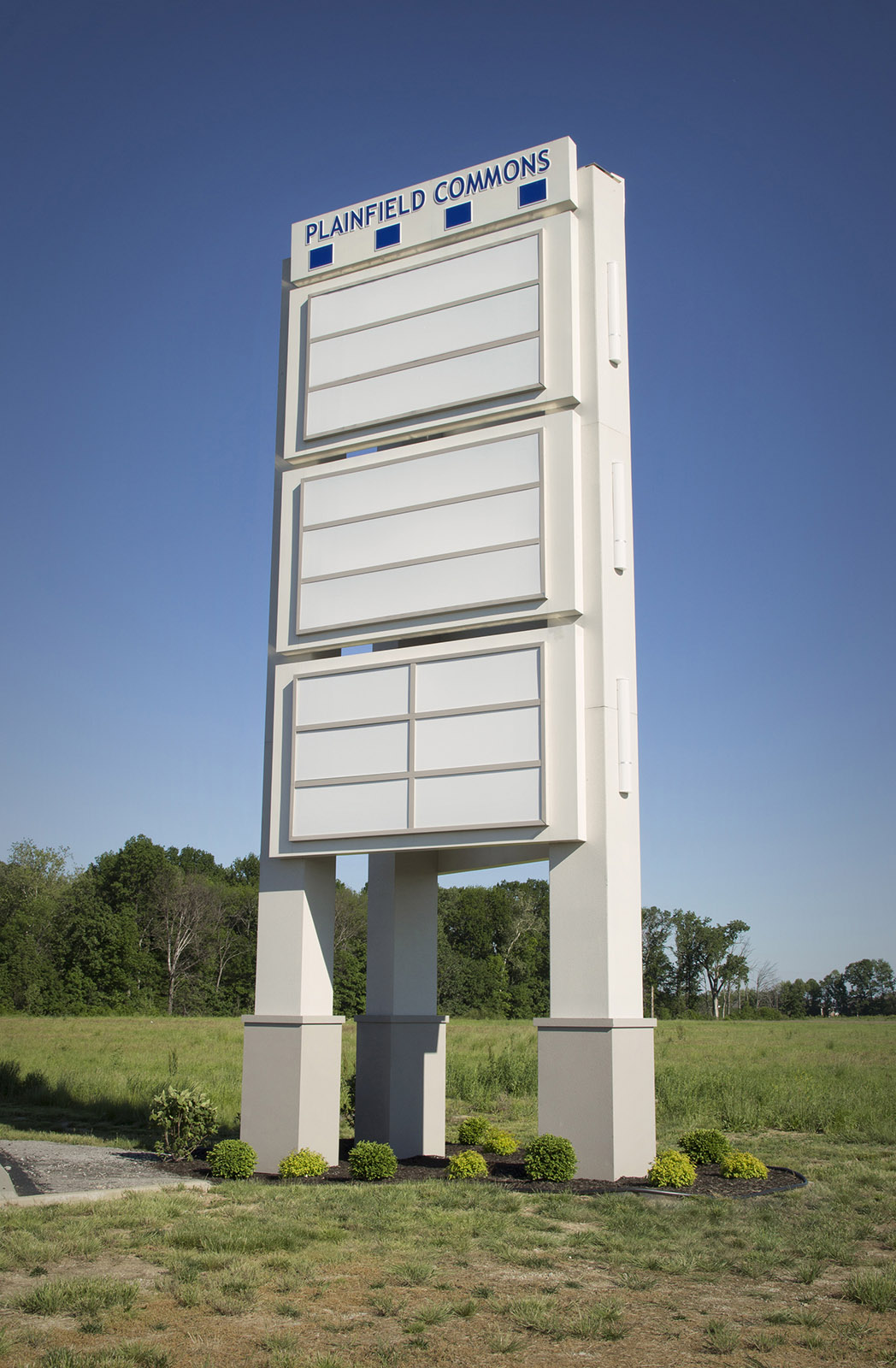[one_third last=”no” class=”” id=””][imageframe lightbox=”yes” style_type=”dropshadow” bordercolor=”” bordersize=”10px” stylecolor=”” align=”center” animation_type=”0″ animation_direction=”down” animation_speed=”0.1″ class=”” id=””] [/imageframe][/one_third]
[/imageframe][/one_third]
[two_third last=”yes” class=”” id=””]This Plainfield Commons sign is an example of a pylon tenant panel system sign. The sign identifies the shopping center and the retailers in the center. We all pass these types of signs every day, and most of us take them for granted. Being directionally challenged, I’m usually in some state of lost; I count on landmarks, way finders, and other signs to inform and direct me. I recently located a Tractor supply store, which sits off the road, only by a tenant panel sign. I might have been lost for days without it.
What are the Keys to Panel Sign Design?
A panel system sign is designed so that individual panels are replaceable. As tenants change, the sign can be modified, one panel at a time, to stay current. To best advertise the center and tenants, a well-designed panel sign should be multi-functional. Anchor stores, or primary tenants, should have the capability to use larger areas of surface space, and placement on the sign may be key as well A well designed panel sign should allow for modifications, within the limitations of the sign, to meet individual tenant’s needs and those of the center as priorities change.
Give me a Sign or I’m Lost
Without signs, most of us would have a more difficult time finding our way. I know I’d have a hard time finding the dollar store, but then again without signs I’m lost in the dark. How about you, do you depend on signs, take them for granted, or instinctively know your way? If you’d like to learn more—give us a sign.
Like what you’re reading? Join us on Twitter, Facebook, and Google Plus, and let’s continue the conversation.[/two_third]








Leave A Comment